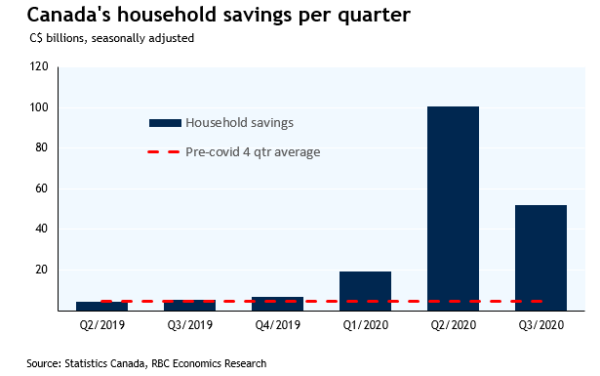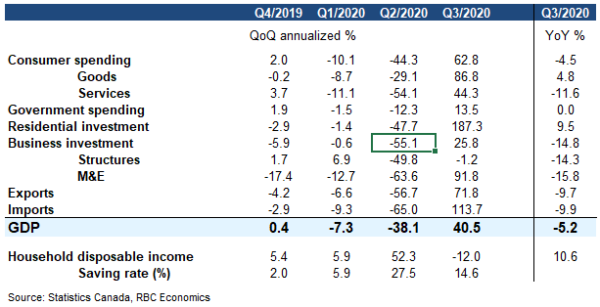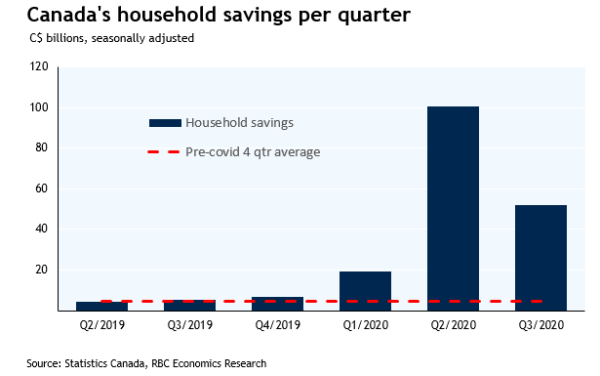- 40.5% (annualized) Q3 GDP bounce-back big (but smaller than expected)
- Spending on services still very restrained – goods-producing sectors doing better
- Savings hoard to boost spending once virus containment measures ease
The 8.9% increase in Q3 GDP (40.5% at an annualized rate) didn’t meet forecasters’ expectations, but still marked a significant bounce-back in output with almost three-quarters of the total 18% March/April GDP drop retraced as of September. Consumer spending on goods and residential investment rebounded sharply to stand above pre-shock levels. Business investment also bounced back despite ongoing weakness in the oil & gas sector.
The good news in today’s report is that the economy regained ground however the re-imposition of virus containment measures, although not as stringent to-date as those imposed in the spring, is putting a cap on the near-term recovery. Statistics Canada’s preliminary estimate of October GDP was up 0.2%, however this is likely to be followed by pullback in November, led by another downturn in hotel and restaurant sales and softer retail activity with Toronto/Peel region temporarily shuttering non-essential retailers. The rebound to-date has also been decidedly smaller in travel and hospitality-related services. Output in accommodation & food services remained almost 30% below pre-shock levels in September contributing to the weakness in consumer spending on services. We expect the recovery essentially ground to a halt in Q4.
For businesses struggling with containment measures, the light at the end of the tunnel comes from recent vaccine news, as well as the high level of household savings. The combination of exceptionally large government income supports and the ‘forced’ savings for higher-income households who normally spend more on discretionary purchases resulted in household savings balances spiking a cumulative $160 billion relative to pre-COVID levels through the last three quarters. At least some of those substantial savings will be spent once virus containment measures can be sustainably eased.




 Signal2forex.com - Best Forex robots and signals
Signal2forex.com - Best Forex robots and signals




